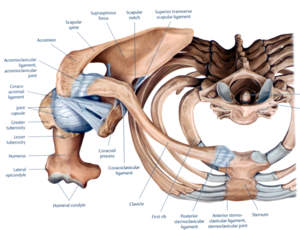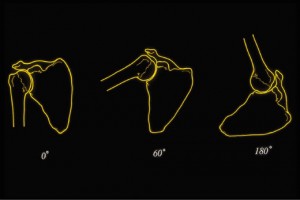The shoulder blade or scapula floats on the back of the ribcage connected to the arm, spine, and ribcage via numerous muscles.
It can be seen to play a dual role depending on where the arm is in space.
The inner edge of the shoulder blade is called the medial spine.
Ideally, the medial spines of both shoulder blades are equidistant from the spinal column.
Though the hip and shoulder joints are both ball and socket joints designed to allow for maximum movement and rotation, there is more freedom in the shoulder joint than the hip.
One reason for this is designed laxity in the ligaments connecting the arm to the shoulder. The shoulder ligaments are lax and the tendons of the rotator cuff muscles act as ligaments to provide some necessary tension.
Another interesting reason is that in the lower body, the sacrum anchors the pelvis so the hips have extremely limited options for motion when the leg moves.
The pelvis is a relatively solid structure with minimal movements available in the both pubic symphysis and the sacroiliac joints.
The upper body has no sacrum to marry the shoulder girdle at the back.
The rhomboid muscles sort of act like the sacrum and fulfill this role to a degree.
The shoulder girdle is four bones (two shoulder blades, two collar bones) and with no sacrum connecting the shoulder blades to the spine, they are free to move off of the back if called upon to do so.
They are called upon to do so when the arm lifts over the head.
In an action like reaching up to grab something off of a high shelf shoulder blade moves with the arm and is essentially hanging from the bottom of the arm.
But when the arm hangs by your side your arm is hanging from the shoulder.



